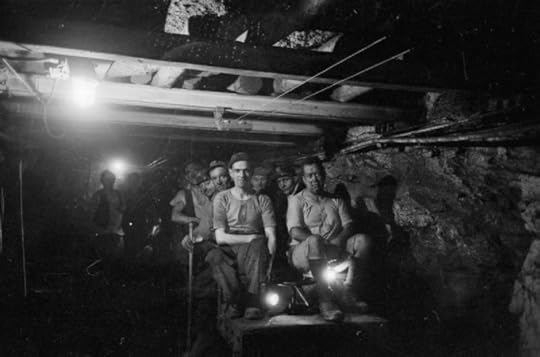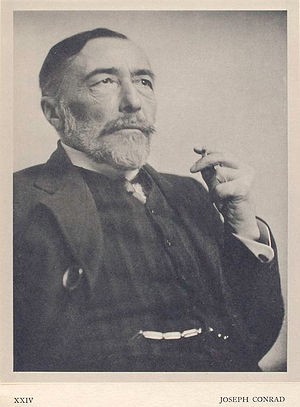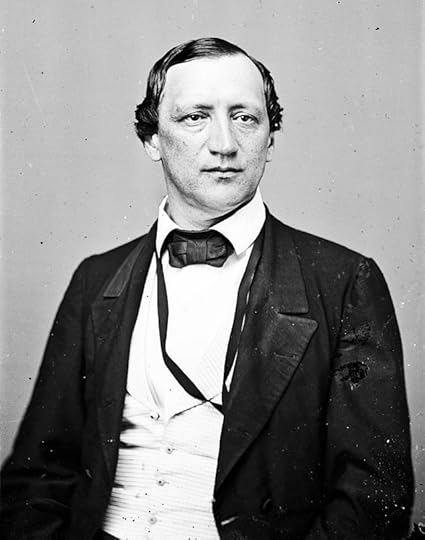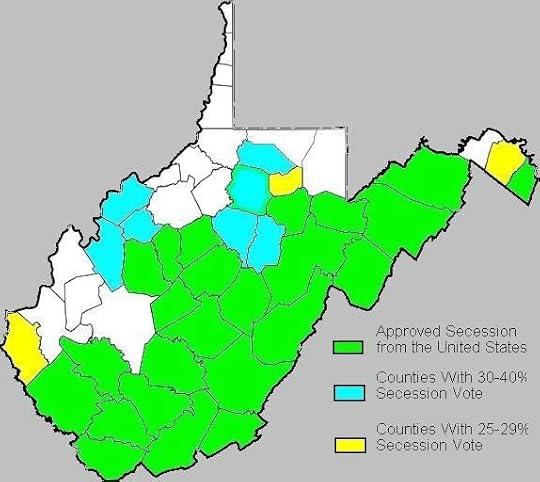C.T. Liotta's Blog, page 26
September 14, 2017
A book, unwritten
Someday, I’ll finish this story, but until I do, here’s the opening.
A man and his 14-year-old granddaughter looked over a lake from the end of a pier in Lewis County, West Virginia. It was late September and cool, and the wooden pillars cast long shadows that ran parallel to a trail of black skid marks. The marks continued past where the old man stood, but seemed inconsequential to him as he studied the shoreline on the opposite side.
 Photo: Nicholas A. Tonelli
Photo: Nicholas A. Tonelli“Tell me again, grand...
September 9, 2017
Hurricane.
Failed leadership in Congress, a President who won’t lead, empty, meaningless bluster toward North Korea, and a category five hurricane barreling toward Florida while the Cajun Navy is still busy in Texas.

Here’s the recipe to a Hurricane, the super-boozy cocktail that will help you usher Armageddon to your front door:
2 oz White rum
2 oz Dark rum
1 oz lime juice
1 oz orange juice
2 oz Passion fruit juice
.5 oz Simple syrup
.5 oz Grenadine
Shake with ice, strain; garnish with orange slices and cherries.

Hurricane. was originally published in The Shrunken Head on Medium, where people are continuing the conversation by highlighting and responding to this story.
Three Unusual Facts About the Battle of Arras
One hundred years ago, on April 9, 1917, the Battle of Arras began on the Western Front during World War I.
By 1917, World War I was a stalemate. The war that was predicted to be over quickly had dragged on for nearly three years. The British and French, entrenched against the Germans on the Western Front, continued to look for a path to victory.

When General Robert Nivelle took command of the French army in 1916, he and his British counterpart, Sir Douglas Haig, developed a plan for a breakthrough on the Aisne at the Chemin des Dames ridge.
The town of Arras, 80km to the north, was chosen as the site of a British diversionary offensive. Nivelle and Haig hoped that German reserve troops from the south would be moved to Arras at the first sign of fighting, thus thinning the German ranks and allowing the French an easy breakthrough at the Second Battle of the Aisne.
The battle of Arras was unique to World War I in many ways. Three unusual facts follow:
1. A war underground
Machine gun fire from no-man’s land cut down scores of troops approaching the front in the battles of Verdun and the Somme. Allied commanders, therefore, sought innovative ways to mass large numbers of troops outside of the knowledge of the German army. Engineers from New Zealand created a network of underground tunnels that then allowed soldiers to exit directly onto the front line.
For four months, workers dug in 18-hour shifts, 24 hours a day. By the morning of battle, 20 km of electrically-lit tunnels were complete and included light rail, galley kitchens, wells, latrines and hospitals. 24,000 soldiers lived underground the night before the battle.
2. Success of the “Creeping Barrage”
The Battle of the Somme in 1916 saw the implementation of a “creeping barrage” for the first time in World War I. Artillery cannons fired a wall of explosives and shrapnel in front of advancing soldiers to shield them from enemy machine guns. At that time, success was mixed due to an unacceptable number of friendly-fire casualties. One year on, modifications were made. The movement of troops at Arras was strictly timed, scheduled and rehearsed so that the artillery fire landed ahead of them as they advanced. Artillery officers worked on solutions to erratic and inaccurate fire caused by wear on cannon barrels. By compensating mathematically, better accuracy was obtained and fewer deaths from friendly fire were noted.
3. The Red Baron
As part of the planning for the battle of Arras the Royal Flying Corps, under the command of Richard Trenchard, flew aerial reconnaissance missions, low and slow, over German positions. The work was dangerous and became treacherous in “Bloody April” with the arrival of Baron Manfred Richthofen and his flying circus. From April 4–8, over 125 British aircraft were lost both to German air superiority and to the inexperience of new pilots brought in to replace those shot down by the Red Baron.
Like most of the battles before it, the outcome was not as anticipated. The British made important territorial gains at Arras but at the cost of over 150,000 lives. Though the battle was a British success, the Nivelle campaign at the Aisne failed, eventually leading to French mutinies and Nivelle’s ouster. World War I would continue to rage on for another year and a half.
“Good morning, good morning,” the general said,
When we met him last week on our way to the line.
Now the soldiers he smiled at are most of ’em dead,
And we’re cursing his staff for incompetent swine.
“He’s a cheery old card,” muttered Harry to Jack
As they slogged up to Arras with rifle and pack.
But he did for them both by his plan of attack.
-Sigfried Sassoon

Three Unusual Facts About the Battle of Arras was originally published in The Shrunken Head on Medium, where people are continuing the conversation by highlighting and responding to this story.
Coq au Vin and a Missing Arm
“He looks like a Gucci sunglass model!” Kathy said to her friend, as her friend applied blue eye-shadow in the mirror of the women’s room.
 Photo by JeffreyW, Flickr
Photo by JeffreyW, Flickr“How did you meet?”
“Online,” said the woman. “On an online dating app called Embr. Tonight, we’re meeting at last!”
The two women went outside.
“You’ll have to tell me about your date in the morning,” said Kathy’s friend. “Tonight I’m lecturing, and I won’t be finished until eleven.”
“What are you lecturing about?”
“The role of women in fiction, and the application of the Bechdel test.”
“How does a work of fiction pass the Bechdel test? Like, if I were writing about the last fifteen minutes, verbatim, would it pass, Lisa?”
“Now it would. I’ll have to explain it all later. You have a big night ahead with an attractive man!”
“I hope he looks as dreamy in real life as he does in his pictures,” said Kathy. “I really hope he likes me!”
Later that night, in her apartment, Kathy dimmed the lights and lit candles. Coq au vin simmered on the stove. There was a knock. Kathy checked her lipstick in the hallway mirror, and opened the door.
Carlton Ringgold stood handsomely at the entrance, with an ear-to-ear smile. “Kathy?” he asked.
She smiled back. “May I take your coat?”
As he removed his seersucker blazer, Kathy noticed something not immediately apparent in Carlton’s dating profile. Carlton Ringgold had a tiny nub in place of his left arm.
“I have a tiny nub in place of my left arm,” he said, waving the nub up and down. “It was trapped in an escalator when I was three.”
“What part?” asked Kathy, not sure what else to ask.
He swung his nub toward her and pointed with the finger of his right hand. “This part, above the elbow.”
“I mean, what part of the escalator?”
“The part where the stairs go back into the floor. It tore it to pieces like a woodchipper. It smells wonderful in here. Shall we eat?”
Kathy dished out portions of chicken and they sat at a candlelit table.
Carlton said, “it isn’t easy living with one arm. I have a prosthetic that I sometimes use, but it doesn’t function well, and I shouldn’t have to wear it simply to conform to society and make everybody else feel more at ease.”
Carlton continued for another several minutes about his missing arm, and Kathy listened attentively, but at some point she was ready to change the subject. He continued to talk about his arm, however, and she felt that interrupting him might be rude.
Through three courses of dinner, he talked about his missing arm- what childhood was like, what activities he could and could not easily accomplish, and the daily challenges of a world ill-equipped to accommodate him.
By the time she served ice cream, Kathy was bored of hearing of his arm, and tired. Her makeup was melting and her hair had started to frizz. There was considerable cleanup ahead, and Carlton said that he would help to carry the dishes to the sink, but for his missing arm.
When he would not leave, Kathy at last told him that she had to make a night of it, and that it was a pleasure meeting him. He felt the chill in her voice.
“Have I said something offensive to you?” he asked.
“No,” she replied, “But when, over the course of this night, were you going to ask about ME?”
She removed her prosthetic leg, placed it beside her on the sofa, and told him to show himself out because she was drunk and did not want to move.

Coq au Vin and a Missing Arm was originally published in The Shrunken Head on Medium, where people are continuing the conversation by highlighting and responding to this story.
Red Hill Mining Town
The brief meaning of U2’s classic song from “The Joshua Tree”
In 1984, the British National Coal Board — with the support of Margaret Thatcher — closed an array of unprofitable mines. Especially impacted were Wales, the Midlands and the North. The National Union of Mineworkers declared a strike. The result was political discord and violence between the union pickets and the UK police force.
U2 frontman Bono worked on a song about this. Feeling unqualified to speak about the political specifics, he instead wrote of the devastation the economic uncertainty brought to families. The song became “Red Hill Mining Town” on their album “the Joshua Tree.”
https://medium.com/media/c8336f76fc2357aa60530bb3892f0a81/href

Red Hill Mining Town was originally published in The Shrunken Head on Medium, where people are continuing the conversation by highlighting and responding to this story.
How Conrad and Achebe Battled over Africa
“Heart of Darkness” and “Things Fall Apart” give readers two very different perspectives of the continent.
I’m reading criticism of Joseph Conrad’s 1899 novella “Heart of Darkness.” It’s one of my favorite stories. It’s a tale about the evils and insanity of the Europeans, who exploited Africa and its people for ivory in the 19th century. Conrad comes down very hard on Colonialism. He has no tolerance for Europeans being in Africa, trying to “civilise” the “savages.” He seems progressive for the 19th century.

And yet, Nigerian novelist Chinua Achebe hated “Heart of Darkness.” He said that in spite of its condemnation of brutality in Africa, all of the African people in the story serve as props, savages and backdrops to the moral suffering of the white, European protagonist. That is, the heart of the story is the European guy suffering morally, not the Africans suffering, period.
The novel seems to say “Africans are dying, but look at the white guy suffering morally. Cry for him. Boo-hoo.”
I think that it continues to say a lot about how we talk about race in America in 2017. Some, like Conrad, feel that condemnation of physical racism — slavery, fire hoses, lynchings and torches — is what “not being racist” is about. Many people feel that they’ve done a good job and can rest well if they’ve condemned these things.
Others, like Achebe, ask that people go a few steps further down the road, and see those without power three-dimensionally — not just as background actors and props against which the actions, suffering and drama of Europeans take place.
I fall in the middle of this literary argument. I agree with Achebe without condemning Conrad. Conrad’s book IS about the moral suffering of a European, against a backdrop of Africans. Achebe left behind a treasury of literature of his own. “Things Fall Apart” is about colonialism from the perspective of Africans. I think that there’s room on the shelf for both. The fight is ultimately for the reader’s sympathies.
“Things Fall Apart” is more honest. “Heart of Darkness” is my favorite tale.

How Conrad and Achebe Battled over Africa was originally published in The Shrunken Head on Medium, where people are continuing the conversation by highlighting and responding to this story.
August 23, 2017
Peaty Whisky: A Tradition in Scotch Worth Sampling
Curt Sembello published this story to Thirst Magazine earlier this year.
 Peaty Whisky.
Peaty Whisky.Peaty Whisky - A Tradition in Scotch Worth Sampling

Peaty Whisky: A Tradition in Scotch Worth Sampling was originally published in The Shrunken Head on Medium, where people are continuing the conversation by highlighting and responding to this story.
June 11, 2017
How West Virginia Became a State
In 1861, the commonwealth of Virginia joined the Confederate States of America. It started when the Virginia General Assembly voted to secede on April 17. On May 23, Virginia held a popular vote and 75% of Virginia citizens agreed.
The no vote came largely from the western part of Virginia — especially in the northwest, near Pennsylvania and Ohio. 60% of western Virginian delegates and 66% of western Virginians voted not to join the south.
The Wheeling ConventionsAfter the Virginia General Assembly vote, ten days before Virginia’s popular vote, The First Wheeling Convention was held in Wheeling, WV. Delegates decided that if the popular vote made Virginia a Confederate state, they would hold a second convention on June 11.
 John Carlile, architect of the Restored Government of Virginia.
John Carlile, architect of the Restored Government of Virginia.John Carlile, a merchant and attorney from Winchester, had a curious legal mind. He was a strict Unionist, but had no desire to see Virginia break into two states.
He wrote A Declaration of the People of Virginia for the Second Wheeling Convention, and argued that Virginia’s decision to join the South was done improperly and therefore illegal.
By Carlile’s legal reasoning, Virginia should not have been allowed to hold a secession vote. Such a vote first required a referendum, which the general assembly had ignored.
Therefore, Carlile reasoned, Virginia’s secession was invalid, and all state office holders affiliated with the south had abandoned their posts. More importantly, a new government of Virginia was required to fill the offices abandoned by the old government. The Restored Government of Virginia was therefore created and recognized by both congress and President Lincoln. As a result, Virginia had two governments — one Union, one Confederate, and for a time was both a Union and a Confederate state.
For one state to break from another, it needed license from the original state to do so. The “Restored Government” could give that authority. They were favorable to a state called “Kanawha,” but renamed it West Virginia in the weeks that followed.
An Election that Nobody Believed was RealSomething else happened that led to statehood: a popular vote to secede from Virginia. There were 70,000 eligible voters living in western Virginia. During the vote to join the Confederacy, 54,000 came out.
During the vote to break from Virginia on October 24, 1961, only 19,000 people voted. Why the low turnout?
The counties closest to Virginia were loyal to the south, and would not participate in an election held by “The Restored Government of Virginia” of the north. They thought the election a sham. Confederate soldiers discouraged voters near Virginia and Maryland, and Union soldiers protected them in the north, so, the numbers were skewed.

On the map to the left, the counties indicated in green refused to participate in the West Virginia statehood election. The blue and yellow counties had low voter turnout and limited participation. White counties had high participation, or were added after statehood.
So, with 25% of the state voting, and 18,000 votes for statehood and 500 votes against it, a state constitutional convention was held. The constitution was drawn primarily by northern West Virginians, and distrusted by southern West Virginians.
An application for admission to the Union was made to the United States Congress, and on December 31, 1862, an enabling act was approved by President Lincoln admitting West Virginia as the 35th State on June 20, 1863.
After the Civil War, Virginia was readmitted to the Union. West Virginians were concerned that Virginia might challenge West Virginia’s statehood. Congress, therefore, set a condition for Virginia’s readmission to the union: it must affirm in its 1869 Constitution that the authority by which the State of West Virginia was created out of Virginia territory had indeed been valid, thus giving its consent to the creation of West Virginia retroactive to 1863.

How West Virginia Became a State was originally published in The Shrunken Head on Medium, where people are continuing the conversation by highlighting and responding to this story.
April 6, 2017
The case for bad coffee
Keith Pandolfi pens an essay about what makes a bad cup of coffee great at this link:
http://www.seriouseats.com/2015/10/the-case-for-bad-coffee.html


The case for bad coffee was originally published in The Shrunken Head on Medium, where people are continuing the conversation by highlighting and responding to this story.



